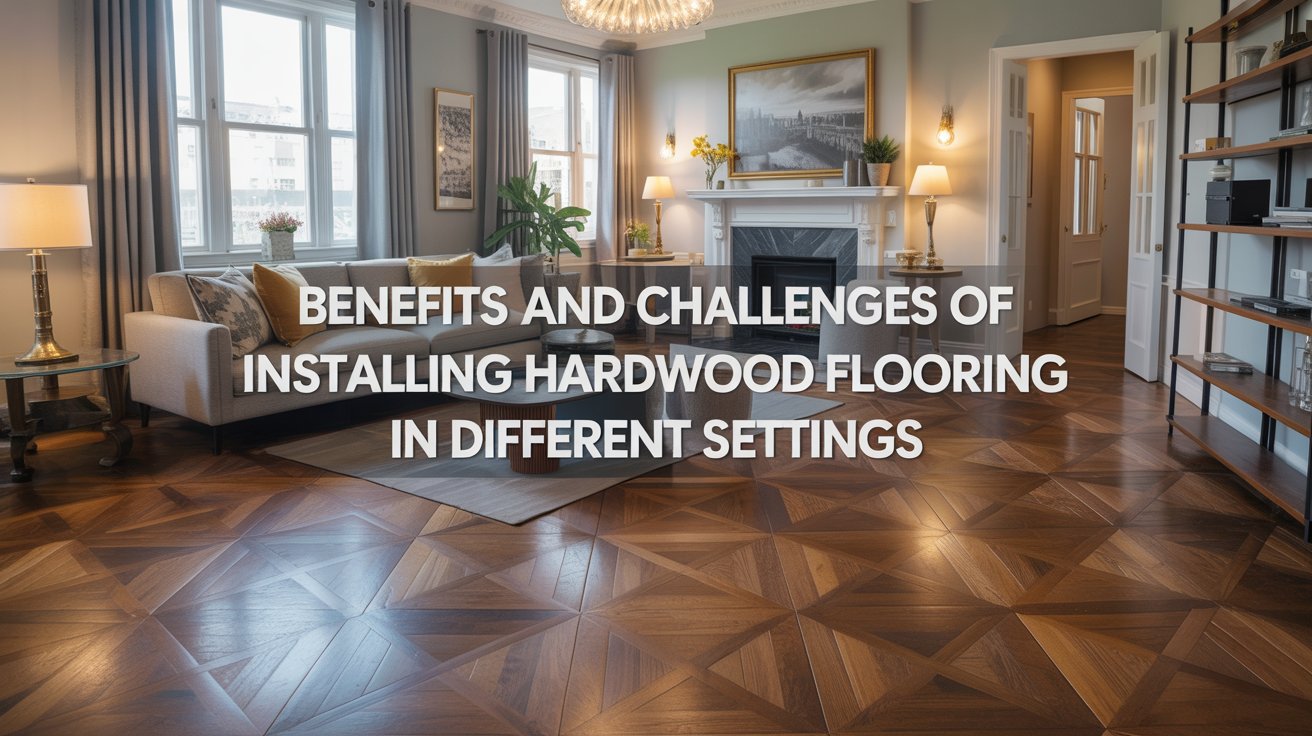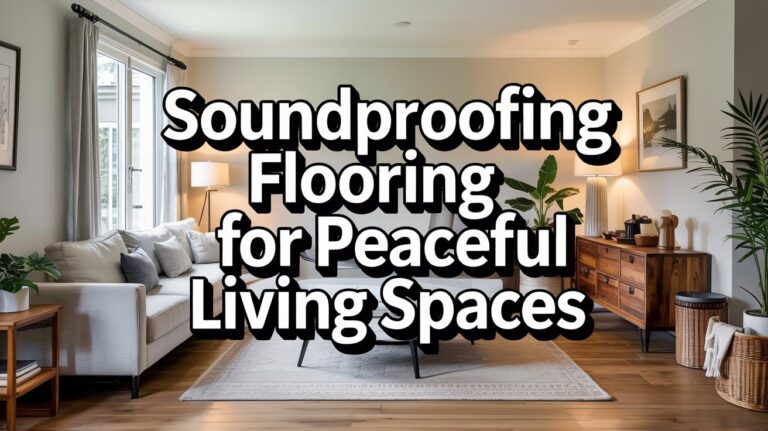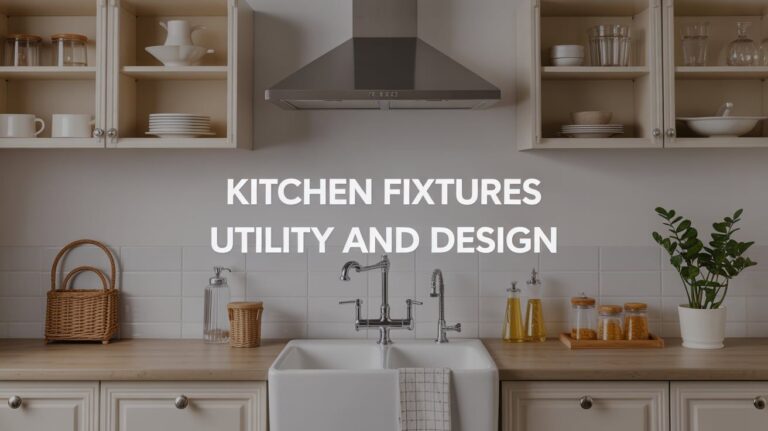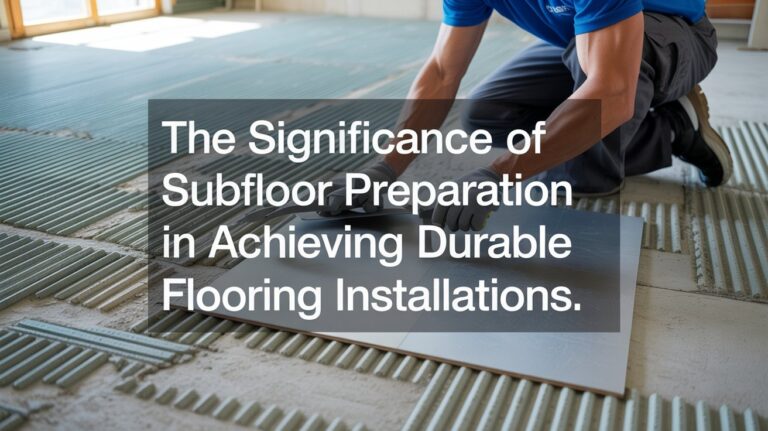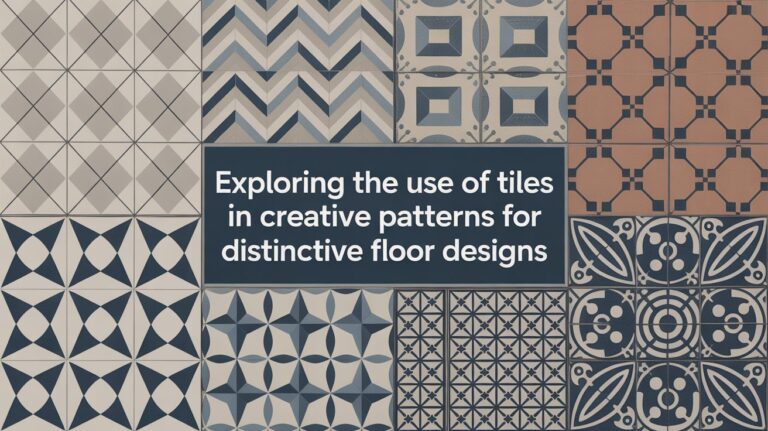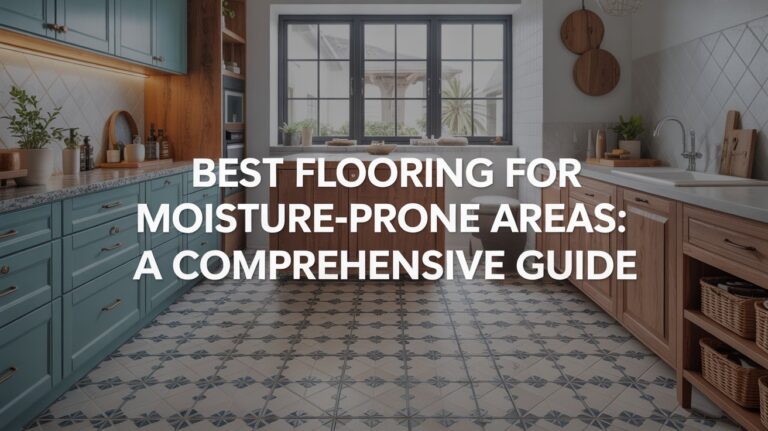The Benefits and Challenges of Installing Hardwood Flooring in Different Settings
I have been, or can be if you click on a link and make a purchase, compensated via a cash payment, gift, or something else of value for writing this post. As an Amazon Associate, I earn from qualifying purchases. Please read my full Affiliate Disclosure for more information.
Hardwood brings durable beauty, but benefits and challenges vary by setting. In high-traffic areas, choose hard species or engineered boards with strong wear layers and scratch-resistant finishes. Kitchens and bathrooms need moisture barriers, water-resistant finishes, and prompt spill care. Basements require moisture testing, proper barriers, and subfloor prep. For pets and families, pick non-toxic finishes and durable species. Solid vs engineered matters by climate and moisture. Plan acclimation, expansion gaps, and future refinishing to stay ahead—more tips await.
Key Takeaways
- Solid vs engineered options: engineered wood offers better moisture stability for kitchens and basements, while solid wood yields classic feel in stable climates.
- Species and finishes: hardwood with high hardness (oak, maple, hickory) and durable finishes reduces scratches in high-traffic areas.
- Moisture management: use barriers, acclimation, and proper sealing to prevent warping and moisture-related damage across rooms.
- Long-term planning: plan for refinishing intervals, maintenance routines, and documentation to adapt to evolving spaces and styles.
- Sustainability and health: choose responsibly sourced, low-VOC products to balance durability with environmental impact.
Selecting the Right Hardwood for High-Traffic Areas
When you’re choosing hardwood for high-traffic areas, durability is the top priority. You’ll want species with hardness ratings that resist dents and wear, like oak, maple, or hickory, and consider engineered boards for added stability. Match grain patterns to traffic flow and finish level for easier upkeep. Look at wear-layer thickness if you’re choosing engineered wood, as deeper layers allow refinishing. Plan for cleanability and scratch resistance in finishes, including gloss versus matte options. Also evaluate installation techniques, subfloor prep, and acclimation. Finally, explore hardwood stain options that enhance durability, while maintaining color consistency over time.
Moisture Considerations in Kitchens and Bathrooms
Moisture is a critical factor in kitchens and bathrooms, where water exposure is frequent and spills are common. You’ll want to plan for steady moisture management to protect hardwood. Use moisture barriers beneath flooring to slow penetration, and choose finishes with durable water resistance. Maintain humidity control to prevent swelling or gaps between planks. Regularly check seals around sinks and appliances, and address spills promptly.
- Install moisture barriers under the floor
- Use a dehumidifier or ventilation to sustain stable humidity
- Seal transitions and edges thoroughly to prevent leaks
Basements: Subfloor, Climate, and Installation Challenges
Basements present unique subfloor, climate, and installation hurdles that demand careful planning. You’ll need precise subfloor preparation to prevent later problems, especially over concrete slabs. Start by testing for basement moisture and addressing any vapor issues before you lay planks. If moisture levels are elevated, install a proper barrier or engineered underlayment recommended for below-grade spaces. Choose flooring with appropriate depth, acclimation, and stability for fluctuating humidity. Ensure consistent leveling and moisture-most control, sealing gaps, and using expansion gaps per manufacturer guidance. With thorough subfloor prep and climate-aware selection, you reduce cupping, bowing, and placement issues in basements.

Pet-Friendly and Family-Friendly Hardwood Options
When choosing for pets and kids, start with pet-safe finishes that resist staining and odors without harsh chemicals. Look for scratch-resistant surfaces and tight-knit wear layers to handle claws and high traffic, then pair with kid-friendly underlayment for sound dampening and comfort. This practical combo helps you balance protection, ease of cleaning, and long-term durability in active homes.
Pet-Safe Finishes
You don’t have to sacrifice durability for safety: many pet-friendly finishes offer strong protection against scratches and spills while staying low on odors and toxins. In practice, choose Eco friendly finishes and Non toxic sealants to minimize health risks without compromising performance.
- Look for low-VOC labels that meet certification standards
- Prefer water-based products over solvent-based options
- Ensure proper curing time to maximize durability and odor reduction
Application tips help you stay on budget and avoid long downtime. Maintain a consistent cleaning routine, wipe spills promptly, and recoat when gloss fades. These choices keep your space safer for pets and family while preserving floor longevity.
Scratch-Resistant Surfaces
Scratch-resistant surfaces aren’t just about looking good; they’re about staying durable in real-life homes with pets and kids. You’ll prioritize硬wear, choosing finishes and species known for hardness and resilience. Look for options with scratch-resistant finishes, like aluminum oxide or UV-cured topcoats, and choose engineered planks that resist dents while maintaining stability. Eco friendly options exist, from responsibly sourced wood to low-emission coatings, helping indoor air quality. For family rooms, select broad-width boards with tight grain patterns to hide minor scratches. Aesthetic customization matters: textures, matte sheens, and color tones matter without sacrificing performance. Balance durability with style, and your floors stay beautiful longer.
Kid-Friendly Underlayment
Looking for kid-friendly underlayment? You’ll want options that cushion drops, reduce noise, and resist moisture without harming pets or kids. Choose materials with low VOCs and durable seams for easy cleaning and long life. For practical everyday use, focus on installation ease, compatibility with underfloor humidity, and sound performance. Each choice can contribute to noise reduction and aesthetic enhancement while keeping safety in mind.
- Low-VOC, non-toxic materials
- Cushioned, moisture-resistant layers
- Seamless, simple installation for family spaces
Solid Vs Engineered: Choosing for Your Setting
When you’re choosing between solid and engineered, consider how each handles your setting’s humidity, foot traffic, and installation constraints. Solid hardwood offers lasting value in stable climates with nail-down or staple-down installs, while engineered provides dimensional stability in basements or radiant-heated spaces. Think about which setting-appropriate choice aligns with your environment, maintenance habits, and long-term goals.
Solid Vs Engineered Pros
Solid flooring offers a classic, tangible feel and often lasts longer when properly maintained, but engineered wood provides greater stability in moisture-prone spaces and easier installation; choosing between them comes down to your environment, budget, and how you plan to use the space.
- Installation techniques: assess subfloor, acclimation, and fastening method to ensure a stable result.
- Environmental impact: consider sourcing, processing, and end-of-life options for both options.
- Long-term performance: weigh wear-layer thickness for solid vs engineered durability in your setting.
This practical comparison helps you decide which path fits your room and lifestyle.
Setting-Appropriate Choices
Choosing the right wood option depends on your setting: solid offers a traditional feel and longevity in stable climates, while engineered stays flatter and more stable in moisture-prone areas. In practical terms, assess humidity, temperature range, and moisture exposure where you’ll install. For homes with radiant or solar heating, consider engineered options that resist expansion from heat swings, preserving fit and finish. In outdoor-adjacent spaces or sunlit rooms, prioritize outdoor durability and a finish designed for UV exposure. For high-traffic zones, select solid or engineered with dense grain and robust wear. Align your choice with climate behavior and maintenance needs.
Acclimation, Expansion, and Long-Term Maintenance
Acclimation is essential before install, because properly conditioning hardwood to your environment reduces gaps, bowing, and finish problems. You’ll manage expansion by allowing for seasonal moisture changes and using proper acclimation of products. Follow precise subfloor preparation and ventilation guidelines to avoid trapped humidity. During installation techniques, leave expansion gaps at walls and thresholds, and secure with appropriate fasteners to prevent squeaks. Long-term maintenance relies on consistent cleaning, climate control, and periodic inspections.
- Monitor humidity 30–50% and maintain steady temps
- Use compatible underlayment and transition moldings
- Refinish only when necessary, after aligning with flooring life cycles
Finishes, Refinsihing, and Planning for the Future
Finishes and refinishing aren’t afterthoughts—they’re the last, critical steps that protect your investment and shape long-term performance. In planning, you’ll weigh finish types, coats, and curing times to match room use and traffic. Practical selection considers durability, sheen, and ease of touch-ups, not just looks. Sustainable sourcing matters: verify finished products come from responsibly managed forests and low-emission processes. Aesthetic customization matters too, guiding color, grain enhancement, and maintenance needs. Document future refinishing intervals now, noting preferred products and compatibility with existing floors. Plan for repairs, future updates, and budget, ensuring your choice remains feasible as conditions and tastes evolve.
Conclusion
In short, you’ll benefit most by matching your hardwood to how you actually live. Consider traffic, moisture, and climate before you install, and pick solid or engineered accordingly. Plan for acclimation, expansion gaps, and proper subfloor prep to prevent gaps or cupping down the line. Choose a durable finish and budget for refinishing a few times. With careful selection and maintenance, you’ll enjoy lasting beauty and fewer surprises in any setting.
